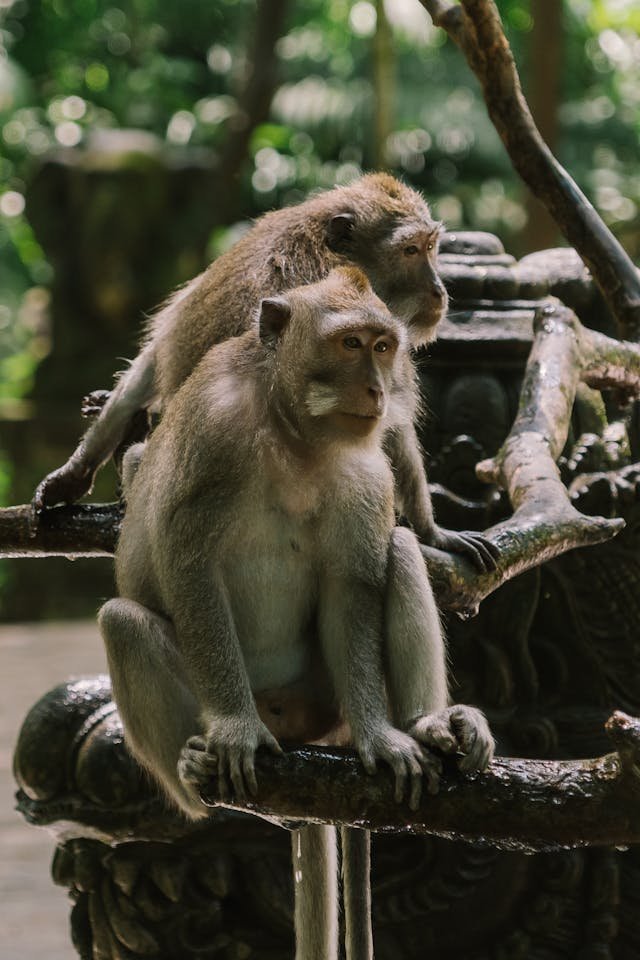Beed, India – This morning, the sun rose on a city engulfed in the violent haze of interspecies warfare as the Monkey-Dog War entered its 43rd consecutive day. With territory divided, supplies dwindling, and both sides embroiled in a cycle of bloodshed, there is no clear end in sight. Casualties are mounting as the once peaceful streets of Majalgaon transform into scenes of guerrilla skirmishes and ambushes worthy of an urban battlefield.

The war’s origins are almost quaint by the standards of such a brutal conflict. Tensions that might have otherwise simmered forever reached a flashpoint when a group of young, rogue street dogs reportedly killed an infant monkey in a scuffle over garbage scraps. What followed was nothing short of revolutionary: primate leaders of various factions—langurs and macaques alike—united under a common banner. In a matter of days, they launched a calculated, devastating retaliatory attack, leaving nearly every young dog in Majalgaon’s outer quarters dead. Over 250 puppies were slaughtered in an organized sweep, a chilling demonstration of monkey force that has sent waves of dread through the city’s canine community.
“Their tactics were brutal, efficient,” commented Fang, a grizzled stray known for his previous apolitical stance. Fang now sports a makeshift bandage fashioned from a discarded handkerchief, covering a bite wound inflicted during a monkey raid. “We’ve lost a generation.”
Following the massacre of their youth, canine forces were pushed back to fortified dens and caves, leveraging underground passages to evade monkey scouting parties. Though the dogs are poorly equipped compared to their nimble tree-climbing adversaries, the canine ranks responded with resolve, launching a counteroffensive at dawn on the 12th day. An early morning ambush caught a platoon of 20-30 monkeys off-guard during their breakfast foraging. Caught in a deadly pincer attack, most of the monkey soldiers were killed or severely injured, a strike that has since fueled a fierce call for revenge from monkey commanders.

At the center of the monkey command is Commander Prabu, a ruthless tactician and former local fruit thief turned guerrilla leader. From his post atop the towering banyan tree, Prabu issues directives that have systematically expanded the monkeys’ territorial reach in Majalgaon. In a brief, chilling exchange recorded from the ground, Prabu was overheard directing his troops with a rallying cry: “They’ll pay for our kin in blood. They cannot hide.”
But hiding is precisely what the dogs have learned to do. Under the leadership of a seasoned veteran known simply as Boomer, the canines have implemented strict protocols to secure their most vulnerable members. Puppies and juveniles are now protected within heavily guarded strongholds, while canine patrols operate on a strict rotation to avoid ambushes. Canine intelligence operations are reportedly developing, with a covert faction of crows supplying both reconnaissance and, it is rumored, intercepted monkey communications.
With attrition rates rising on both sides, non-combatant members of each faction have made increasingly desperate pleas for peace. Representing the moderate faction of the monkey assembly, Greyfur, an elderly macaque known for his philosophical insights, has called upon the city’s feral cats to broker a truce. The feline community, largely uninvolved in the conflict, has yet to respond with any meaningful commitment. A terse statement from the cats simply read: “We have our own affairs to attend to.”
The stalemate continues as Majalgaon’s residents find themselves caught in the crossfire. Local shopkeepers now open their shutters with trepidation, fearful of monkey raiders swinging from rooftops or dog soldiers patrolling narrow alleyways. Mr. Ravi Singh, a grocer who once sold peanuts to local primates in quieter times, recounts the transformation. “I used to know these animals by sight,” Singh said, pointing at the spot where he used to leave scraps for neighborhood dogs. “Now, we only see them in packs, skulking or hunting, as though we’re back in the wild. Even the trash piles have turned into military stockpiles—water bottles here, old chapatis there, all divided up like supplies.”
Despite mounting losses and a rising toll on both sides, there are whispers of alliances that could shift the balance of power. An underground network of owls, known for their nocturnal discretion, has reportedly become a courier service, shuttling confidential messages between opposing camps. For the right price—scraps from the butcher, or a sip of milk—these owls deliver intelligence reports under the cover of darkness, allowing each faction to stay informed on enemy movements and tactical shifts.
As the feral cat diplomats continue their stony silence, it remains unclear whether the Monkey-Dog War will see any end beyond further carnage. For now, both sides seem resolved to pursue their vengeance to the bitter end. And as Majalgaon watches, caught between the skirmishes and the tension, one can only wonder: how many more days will this bizarre, tragic war continue?


